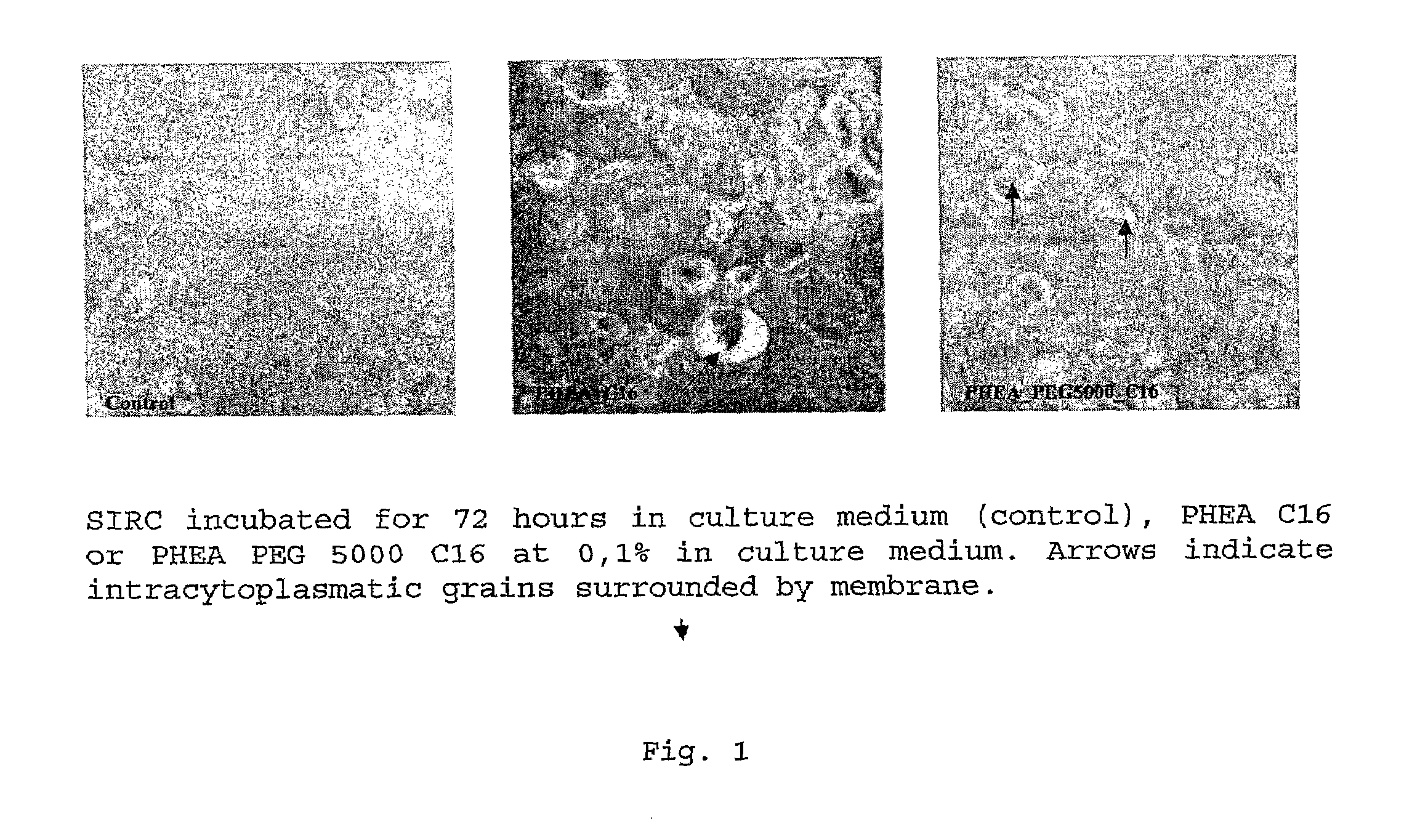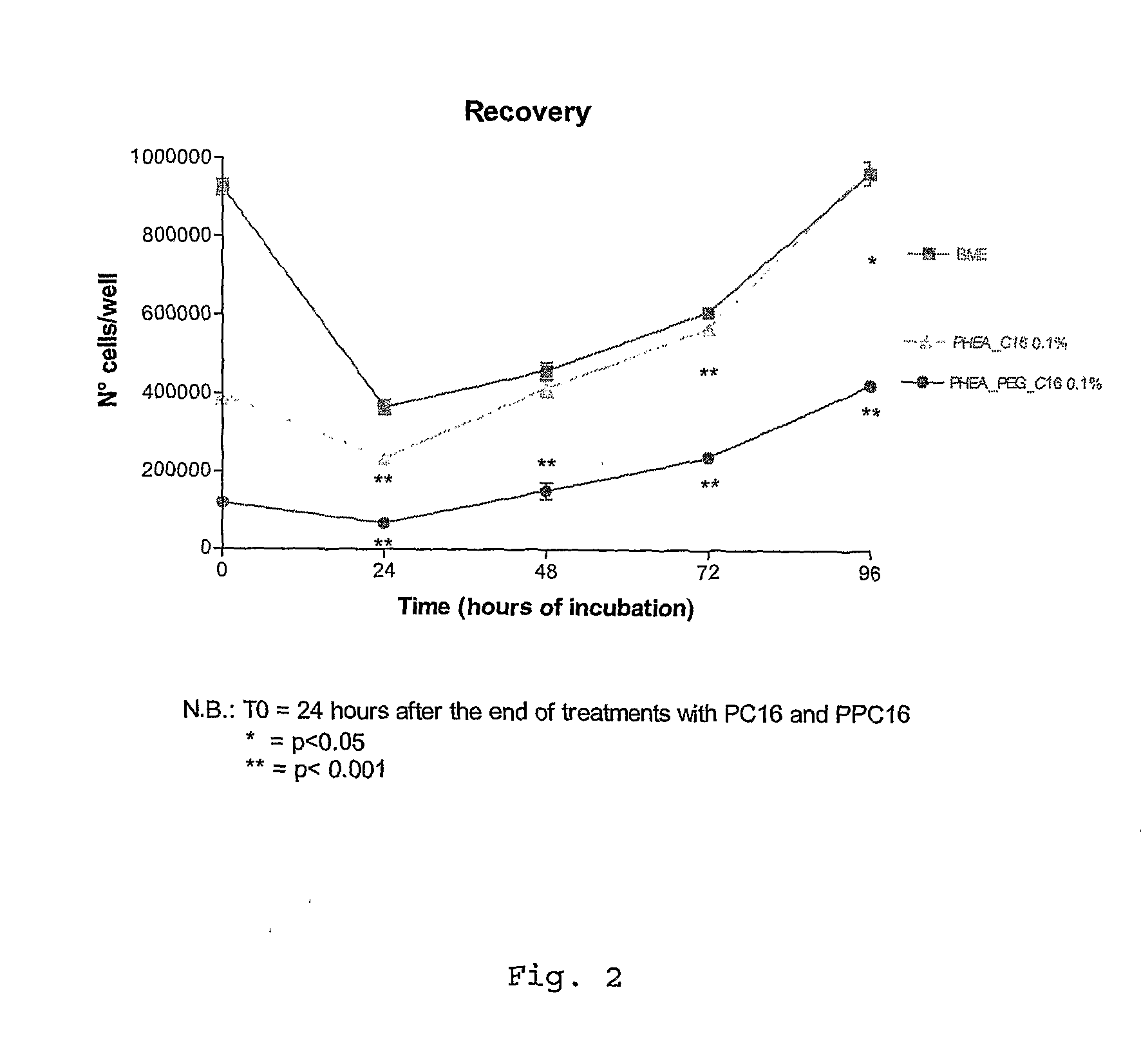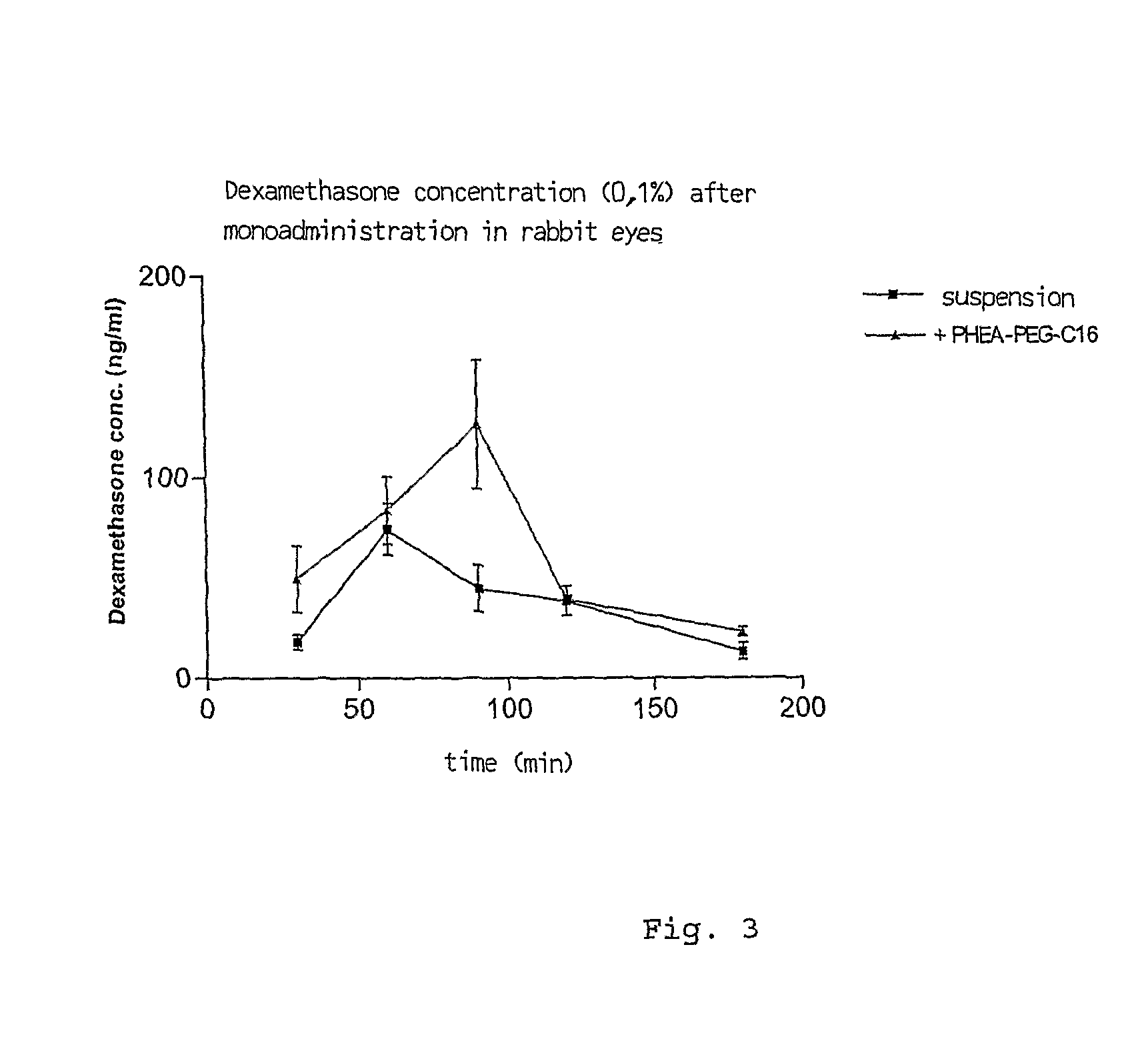Ophthalmic Pharmaceutical Composition Containing Amphiphilic Polyaspartamide Copolymers
a polyaspartamide and amphiphilic technology, applied in the field of amphiphilic graft-type copolymers of polyaspartamide, can solve the problems of limited ophthalmic administration of drugs, limited ocular bioavailability of topically applied drugs, and poor ocular absorption
- Summary
- Abstract
- Description
- Claims
- Application Information
AI Technical Summary
Benefits of technology
Problems solved by technology
Method used
Image
Examples
example 1
[0042]The in vivo transcorneal transport experiments have been performed on male albino rabbits (Charles River) weighing 1.8-2.5 Kg. Prior to the experiment, the animals have been kept in standard cages with free access to food and water. The rabbits have been treated in accordance with the instructions published in “Guiding Principles in the Care and Use of Animals” (DHEW Publication, NIH 80-23) and the ARCO Resolution on the Use of Animals in Research.
[0043]Two dexamethasone alcohol formulations have been used for the study:[0044]Visumetazone® (a commercial formulation of the drug, in a 0.1% w / v suspension);[0045]Micellar formulation (drug, at a final concentration of 0.1% w / v, incorporated inside PHEA-PEG5000-C16 micelles in isotonic phosphate buffer at pH 7.3).
[0046]The formulation of dexamethasone-containing PHEA-PEG5000-C16 micelles has been prepared immediately prior to testing by mixing together the appropriate quantity of copolymer and drug into a homogeneous paste using mo...
example 2
[0050]The in vitro permeability studies have been conducted using a bovine conjunctival epithelial cell (BCEC) multilayer, which reproduces the organisation of the original tissue, as a model.
[0051]Two formulations have been used for the studies with netilmycin sulphate:[0052]Formulation of netilmycin sulphate in modified Ringer's solution, with a netilmycin base concentration of 0.3% w / v;[0053]Micellar formulation (netilmycin sulphate incorporated in PHEA-PEG5000-C16 micelles in modified Ringer's solution, with a netilmycin base concentration of 0.3% w / v).
[0054]The netilmycin-containing formulation has been prepared immediately prior to testing by mixing together the appropriate quantity of copolymer and drug into a homogeneous paste using modified Ringer's solution as a dispersant and subsequently adding a suitable volume of modified Ringer's solution in order to give a final netilmycin base concentration equal to 0.3% w / v.
[0055]The tests have been conducted by introducing 0.5 ml ...
PUM
| Property | Measurement | Unit |
|---|---|---|
| Mass | aaaaa | aaaaa |
| Mass | aaaaa | aaaaa |
| Mass | aaaaa | aaaaa |
Abstract
Description
Claims
Application Information
 Login to View More
Login to View More - R&D
- Intellectual Property
- Life Sciences
- Materials
- Tech Scout
- Unparalleled Data Quality
- Higher Quality Content
- 60% Fewer Hallucinations
Browse by: Latest US Patents, China's latest patents, Technical Efficacy Thesaurus, Application Domain, Technology Topic, Popular Technical Reports.
© 2025 PatSnap. All rights reserved.Legal|Privacy policy|Modern Slavery Act Transparency Statement|Sitemap|About US| Contact US: help@patsnap.com



